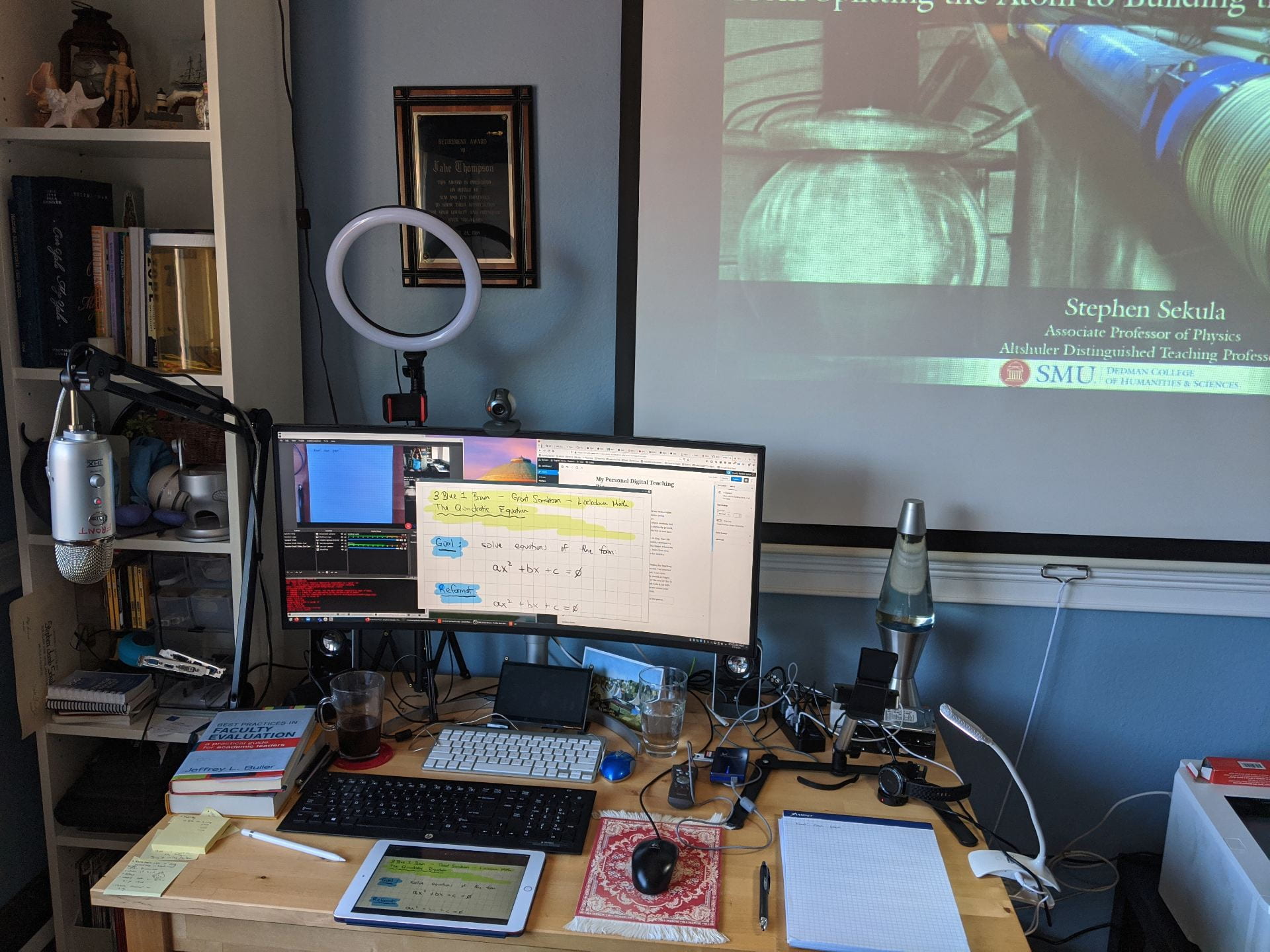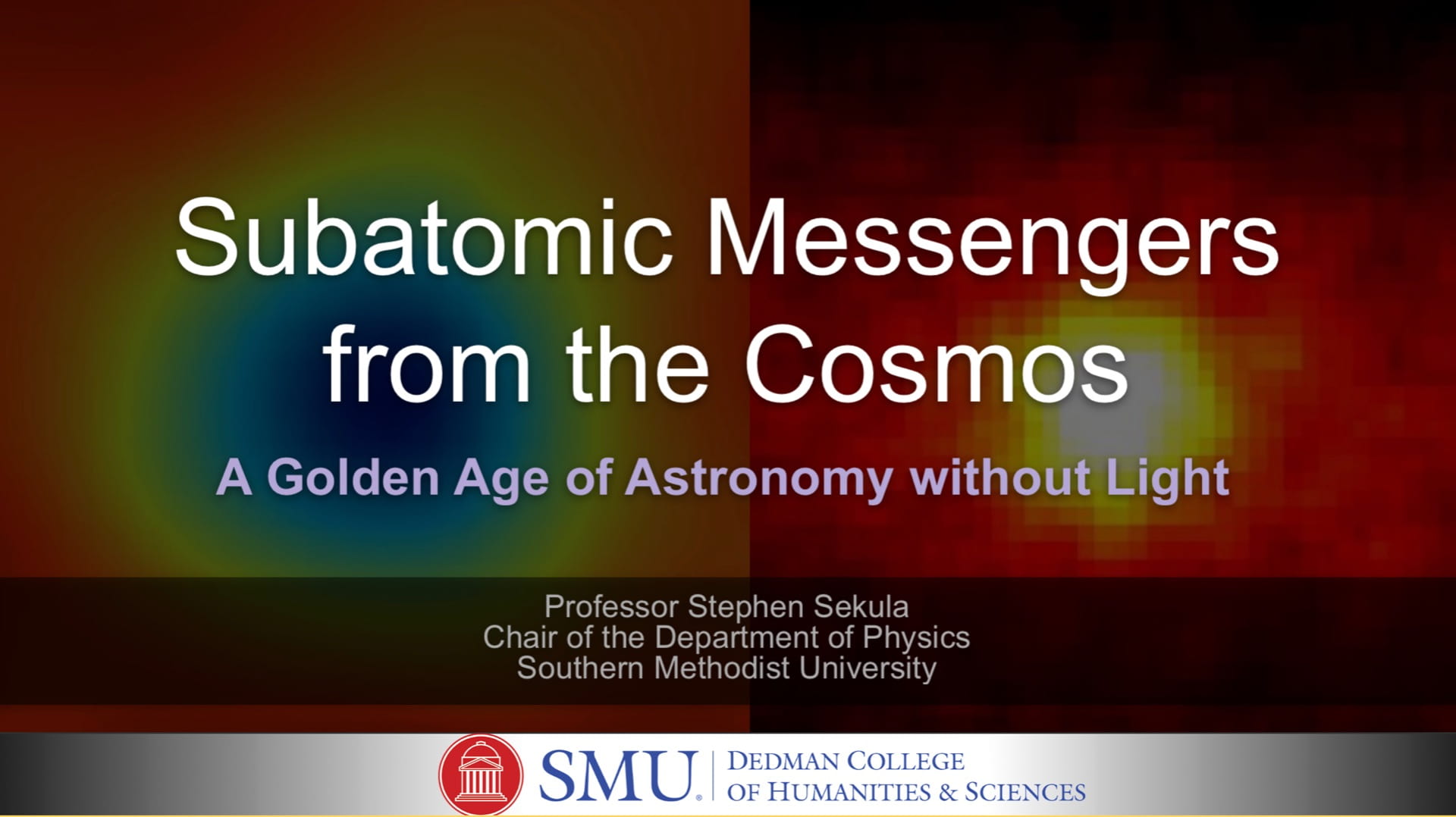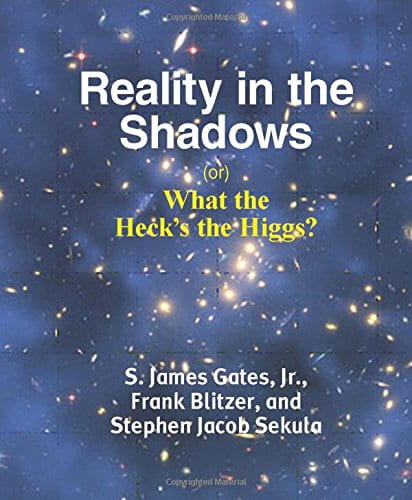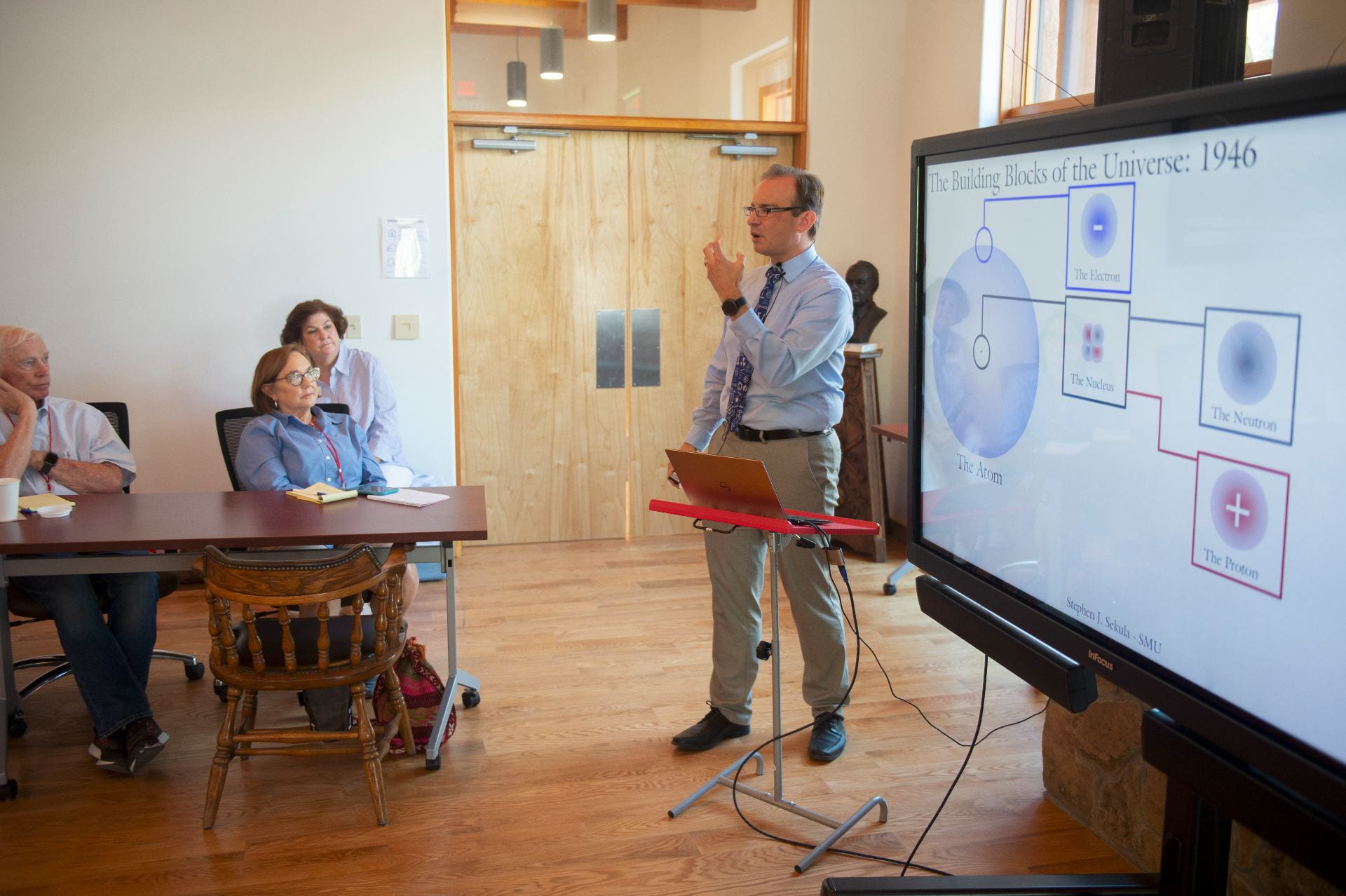My Honors Physics class is a very hands-on class. Managing that in the age of COVID-19 has been an interesting challenge. Tonight, I invited my students (if it was safe to do so) to buy some inexpensive kitchen items – food dye, corn starch, and chocolate – and participate in “Physics in the Kitchen” tonight. Broadcasting from our home kitchen, I guided the students on three experiments.
The first was to make liquid fireworks using diffusion, water, oil, and food dye. Set aside a tall drinking glass filled with room temperature water, leaving about 1cm of space at the top. Then put cooking oil (2 tbsp) in a second small dish. Put two drops of food dye in the oil. Quickly whisk the dye into several smaller drops (do not thoroughly mix!) in the oil. Gently pour the oil into glass of water. The dye droplets will sink to the bottom of the oil, then into the water. They are not oil-soluble, but they are water-soluble, so they leave trails of color in the water (like rocket plumes) and pancake and fan out in the water due to pressure and diffusion. They look like upside-down fireworks!
The second was to estimate the speed of light using a microwave oven and chocolate. Get bars of milk chocolate (e.g. 5in Hershey chocolate). Open your microwave and remove the rotating plate and the mechanism it sits on. Take a ceramic dinner plate and set it upside down over the recess in the floor of the microwave. Set another plate right-side up on the first dinner plate. Layout the chocolate bar on the plate. If you have a few chocolate bars, lay them out next to each other on the plate. Heat the chocolate for about 1 minute. Measure the distance between the closest melty spots on the chocolate (e.g. center to center or edge to corresponding edge). Call this distance D, and convert it to meters. The frequency of the waves in a standard microwave is F=2.45GHz (billion cycles per second), the frequency needed to make water molecules flip back and forth. Multiply out 2DF=z. The number, z, is an estimate of the speed of light! My students took several measurements and we got to within 20% of the accepted value of the speed of light.
The last experiment was to mix 2 parts corn starch to 1 part water to make a non-Newtonian fluid affectionately named “Oobleck”. When pressed, the fluid turns solid. When left on its own, it turns liquid. It’s non-Newtonian because its viscosity is strongly and non-linearly dependent on the applied stress (compressive force). Try balling up the fluid into a solid mass in your hand, roll it into a ball, and then flatten out the palm of your hand. The ball in your hand suddenly turns to liquid. Press it again to make it solid!



